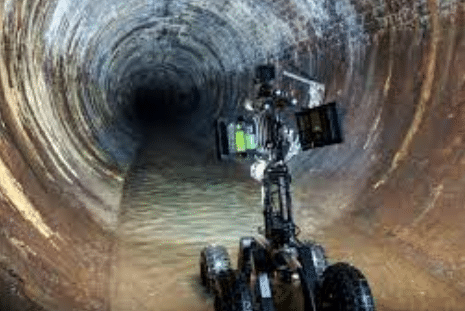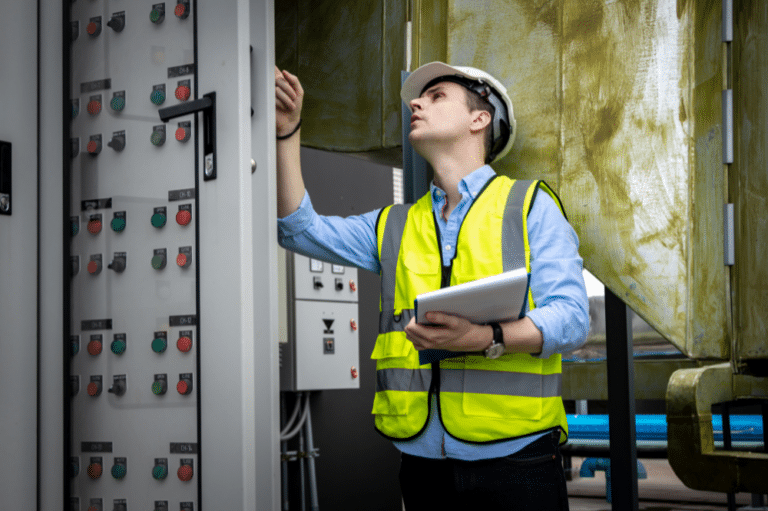Maintaining a safe and efficient commercial kitchen requires more than just high-quality equipment and skilled staff. One crucial aspect that often goes unnoticed is the regular inspection and maintenance of hood vents. Hood vent inspection safety is essential for preventing fires and ensuring optimal air quality in commercial kitchens. This article explores the critical role of hood vent inspections and their benefits in maintaining a safe kitchen environment.
The Importance of Hood Vent Inspections
Fire Prevention
Hood vents play a vital role in controlling and eliminating the grease, smoke, and fumes generated during cooking. Over time, grease and other residues can accumulate in the hood, filters, and ductwork, creating a significant fire hazard. Regular inspections help identify and remove these build-ups before they ignite, significantly reducing the risk of kitchen fires.
Air Quality Maintenance
Proper ventilation is essential for maintaining good air quality in a commercial kitchen. Hood vents extract smoke, steam, and airborne contaminants, ensuring a healthier environment for kitchen staff. Regular inspections ensure that the ventilation system functions efficiently, preventing the build-up of harmful pollutants and ensuring compliance with health and safety standards.
Components of a Hood Vent Inspection
Hood and Filter Cleaning
One of the primary components of a hood vent inspection is cleaning the hood and its filters. This process involves removing and thoroughly cleaning the filters to eliminate grease and particulate build-up. Clean filters ensure the efficient operation of the ventilation system, reducing the risk of fire and maintaining air quality.
Ductwork Examination
The ductwork connected to the hood vent system is another critical area that requires regular inspection. Inspectors check for grease accumulation, blockages, and structural integrity. Properly maintained ductwork ensures that air flows freely, reducing the risk of fire and ensuring effective ventilation.
Fan and Motor Assessment
The exhaust fan and motor are crucial for the proper functioning of the hood vent system. During an inspection, these components are examined for wear and tear, and any necessary repairs or replacements are made. Ensuring that the fan and motor are in good working condition helps maintain efficient ventilation and reduces energy consumption.
Compliance Check
Hood vent inspections also involve checking for compliance with local fire codes and health regulations. Inspectors ensure that the system meets all safety standards and that necessary permits and certifications are up to date. This compliance check helps avoid fines and legal issues while ensuring a safe kitchen environment.
Benefits of Regular Hood Vent Inspections
Enhanced Fire Safety
Regular hood vent inspections and cleanings are essential for minimizing fire risks in commercial kitchens. By removing grease build-up and ensuring that all components are functioning correctly, these inspections help create a safer working environment for kitchen staff.
Improved Air Quality
Effective ventilation is crucial for maintaining good air quality in a commercial kitchen. Regular inspections ensure that the hood vent system operates efficiently, removing smoke, steam, and airborne contaminants. This not only protects the health of kitchen staff but also ensures a more pleasant dining experience for customers.
Cost Savings
While regular hood vent inspections may seem like an additional expense, they can save money in the long run. Preventing fires and ensuring efficient operation reduces the need for costly emergency repairs and downtime. Additionally, well-maintained equipment tends to have a longer lifespan, further reducing replacement costs.
Compliance and Liability
Regular inspections ensure that the hood vent system complies with local fire codes and health regulations. This compliance helps avoid fines and legal issues while also reducing liability in the event of an accident. Demonstrating a commitment to safety and compliance can also enhance the reputation of a business.
Implementing a Regular Inspection Schedule
Frequency of Inspections
The frequency of hood vent inspections depends on the volume of cooking and the type of food prepared. High-volume kitchens, such as those in restaurants or hotels, may require monthly inspections, while smaller operations might only need quarterly inspections. It is essential to assess the specific needs of your kitchen and establish a regular inspection schedule.
Professional Services
While some cleaning and maintenance tasks can be performed by kitchen staff, it is advisable to engage professional services for thorough inspections. Professional inspectors have the expertise and equipment to conduct comprehensive inspections and ensure that all components of the hood vent system are functioning correctly.
Record Keeping
Maintaining detailed records of all inspections and maintenance activities is crucial for ensuring compliance and tracking the condition of the hood vent system. These records can help identify recurring issues and inform decisions about necessary upgrades or replacements.
Partnering with Crescent Construction Services
At Crescent Construction Services, we understand the importance of hood vent inspection safety in commercial kitchens. Our team of experienced professionals provides comprehensive inspection and maintenance services to ensure that your hood vent system operates efficiently and safely. We help you maintain compliance with local regulations, reduce fire risks, and improve air quality. Contact Crescent Construction Services today to schedule your next hood vent inspection and ensure the safety and efficiency of your commercial kitchen.








